Sometimes Argentines are their own worst critics. However, for those of us who are not from that nationality, Argentina and its people remain fascinating, diverse, and, for the most part, quite friendly.
Five days in Buenos Aires are not remotely enough to fully appreciate the historical, architectural, cultural, and gastronomic richness of this great city. They do offer, however, a taste of the banquet that is Buenos Aires as a tourism destination.
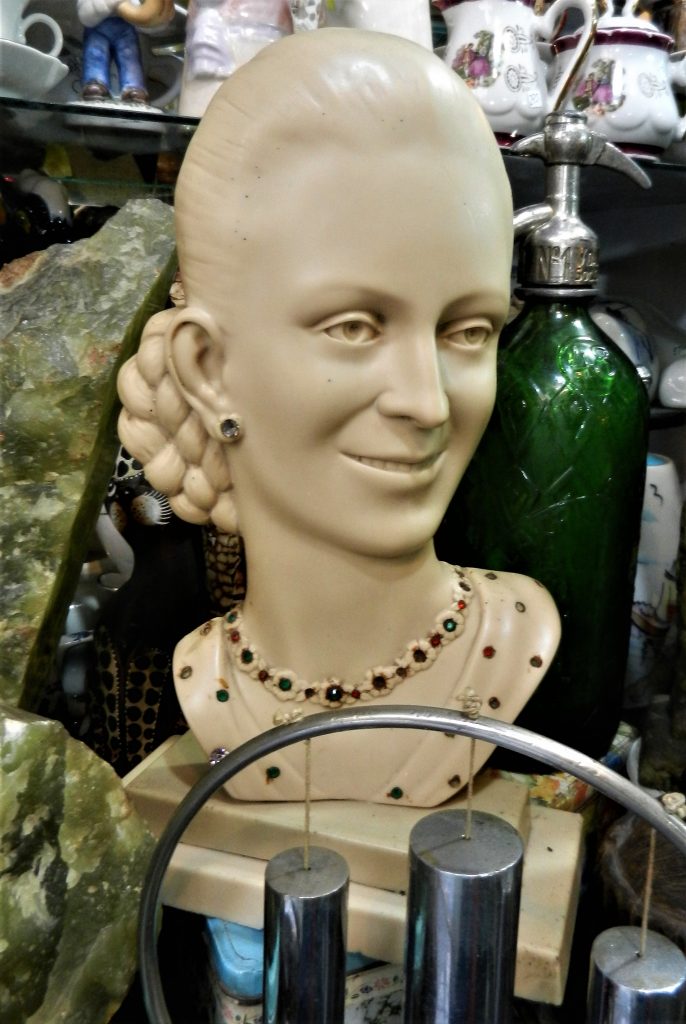
DAY ONE
After the long nine-hour flight from Miami, we stayed at the elegant Four Seasons Hotel Buenos Aires, in the historic neighborhood of La Recoleta. Its 88-year-old Belle Époque-style mansion is a haven for celebrities such as Mick Jagger and Madonna. The main hotel is modern and exquisitely decorated, with beautiful and very comfortable rooms and suites, including Occitane creams, soaps, and shampoos. This hotel has all the characteristics of a great luxury hotel but at a reasonable price. In its restaurant, Elena, guests enjoy a varied breakfast buffet, including fresh fruit, churros (Spanish-style doughnuts), freshly baked croissants, eggs prepared to the guests’ liking, and smoked salmon, among other delights. But the best thing is the excellent service. Even if they are overwhelmed, this staff never fails to be courteous and attentive to customers.

After resting in the hotel we visited Patio Bullrich, a shopping mall near the Four Seasons, to change dollars into Argentine pesos. The exchange was at approximately`102 Pesos per dollar as of December 2021. We tried the delicious prosciutto caprese baguette sandwiches at Valenti’s, where I also purchased onion rolls that reminded me of the Jewish breads of Miami Beach 1960s bakeries. Then we strolled through the cosmopolitan French neighborhood of Retiro and Recoleta, enjoying the architecture of impressive 19th and early 20th century mansions. At that time Argentina was one of the 10 richest nations in the world. Some of the most spectacular mansions are: the Palacio Fernández Anchorena, (1907), owned by the Holy See; Palacio Duhau Park Hyatt (1932), the Beaux Arts-style Palacio Ortiz Basualdo (1912) (occupied by te French Embassy) and the Hotel Alvear Palace, of Belle Époque style. Next to the Alvear we bought the unique María Mateos scarves and shawls, also favored by Karl Lagerfeld and Brigitte Macron. Situated on the Avenida del Libertador, with views of Parque Tres de Febrero, is the Neoclassical Bosch Palace (1910-1917), the residence of the U.S. ambassador since 1929.

At the Iglesia del Pilar de Padres Recoletos (1732) we admired the Baroque altarpiece, with Inca ornamentation from Alto Peru. After visiting the church, we took a guided tour in the huge Recoleta Cemetery (1822) offered in Spanish by an English freelance tour guide. This famous cemetery has 4,872 mausoleums, 6,400 statues, sarcophagi, crypts, and coffins. Among the most beautiful statues is that of Liliana Crociati, with her dog, and, in Art Nouveau style, the moving sculpture of Rufina Cambaceres, a girl who was buried alive. You will also see tombs of personalities such as Nobel Prize winner Federico Leloir and Evita, although this one was surprisingly humble considering the fame of the famous Evita Perón.

You can have tea or coffee and migas sandwiches at Café La Biela (1850), where there are statues representing the writers Jorge Luis Borges and Bioy Casares. Another regular at this café was the internationally renowned race car driver Juan Manuel Fangio. Do not leave Buenos Aires without enjoying an unforgettable concert of the Buenos Aires Philharmonic, or an opera or ballet, at the marvelous Colon Theater (1908), which offers guided tours of its Foyer, Bustos Gallery, Golden Hall, and Main Hall. Due to its acoustics, it is considered one of the five best theaters in the world. It opened its doors with the opera Aida and has hosted performances and concerts of great artists such as Caruso, Baryshnikov, Pavarotti, and Maria Callas.
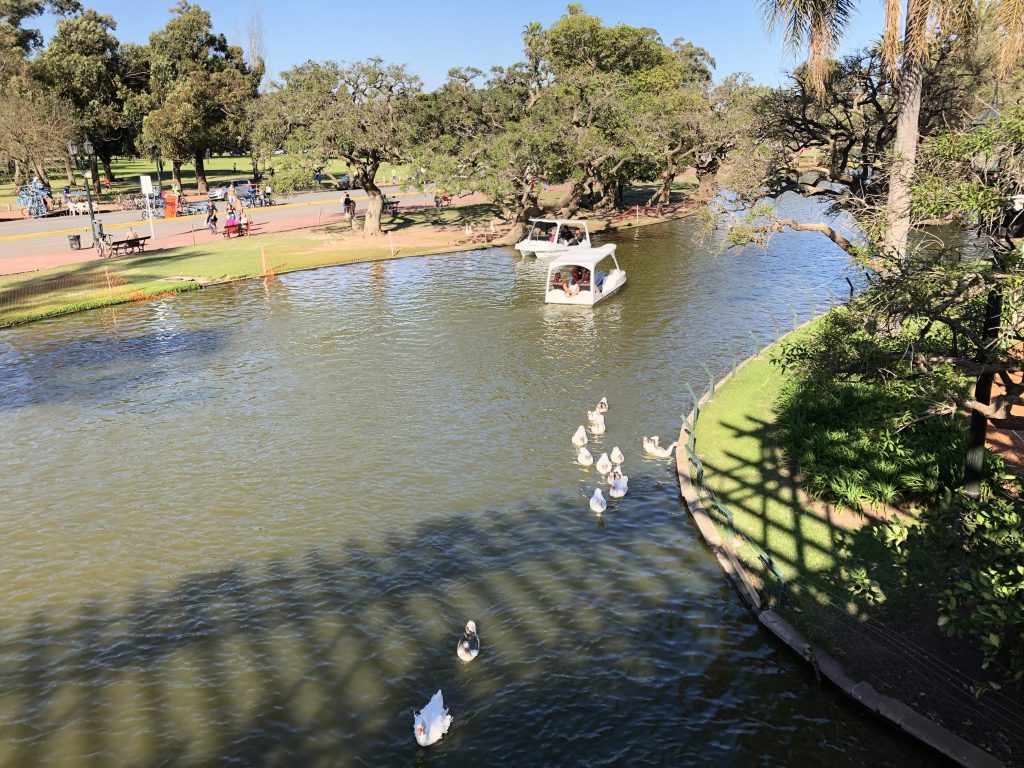
After a very active day return to the Four Seasons to dine at Elena, one of the top 50 restaurants in the world. Enjoy a menu of Burrata Salmorejo (similar to gazpacho soup), sweetbreads, Patagonia trout with a thousand potato leaves, smoked dulce de leche ice cream and chocolate with whiskey.
SECOND DAY
In order to get a panoramic understanding of 33 tourist attractions and neighborhoods, take the hop-on hop-off bus. It goes through neighborhoods such as La Boca, San Telmo, Puerto Madero, and others. For only $20 per person, it will take you to the Casa Rosada, the Plaza de los dos Congresos, the Monumento de los Españoles, the Metropolitan Cathedral, La Bombonera, and other places of interest. You can get off and then hop on the bus at all attractions.

One option for dinner this second day is the Cabaña Las Lilas, overlooking the La Plata River and the buildings of Puerto Madero. The meats are of extraordinary quality as the restaurant has its own livestock. Chef Juan Ignacio Caverzaschi prepares excellent grilled dishes such as chorizo or sweetbreads cooked with Spumante wine. We recommend trying the Portobello mushroom carpaccio with a fabulous sauce of truffles, olive oil, garlic and rosemary followed by a huge T- bone steak flamed in front of the table or by the tenderloin with soufflé potatoes. As a memorable end to the dinner, try the dulce de leche Lava Cake with banana ice cream.
THIRD DAY
The tour of Estancia Santa Susana, which you can buy with Patricia Bignone’s Furlong-Fox agency, includes a visit to the small colonial mansion-museum founded in the 19th century by an Argentine of Irish origin, a gaucho party with tango and milonga, malambo de boleadoras show, asado (the Argentinean version of a Barbecue) with empanadas, chorizo, meats, and flan with dulce de leche, ring races, horseback riding and rides on “sulkys” (one-horse carts).
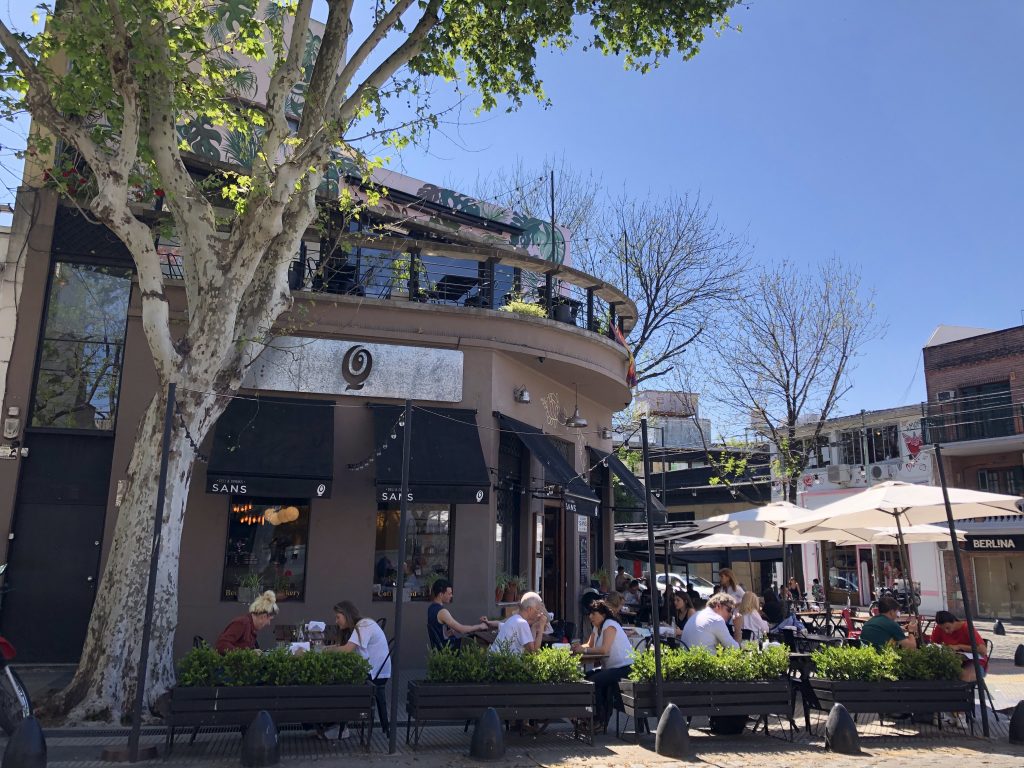
At night you can choose from shows at 300 theaters, including expensive productions such as Cabaret or, if your Spanish is good enough, go to a play or comedy show with comedians such as the popular Roberto Moldavsky. To close the evening after the theater you can opt for a delicious Argentine pizza at Guerrin, a downtown pizza institution since 1932.
FOURTH DAY
On Sunday take a stroll through the Feria de San Telmo in the emblematic neighborhood of San Telmo. In Plaza Dorrego you can buy antique, leather and silver objects as well as Chritofle silverware, at fairly moderate prices. Take a break while enjoying Pebetes (ham and cheese sandwiches on delicious bread) at Bar El Dorrego. In this area you can also enjoy interesting markets, tango street shows, musicians and “living statues.” In the various little shops on Defensa Street you will find valuable antiques, sweets, handicrafts, leather bags and food.
MALBA’s collection of Latin American art (1900-1970), created by billionaire Eduardo Constantini, is a “must see” for art lovers. Founded in 2001, the museum collection includes 500 pieces by artists such as Frida Kahlo, Jeff Koons, Diego Rivera, Joaquín Torres-García, Rufino Tamayo, and Wifredo Lam.
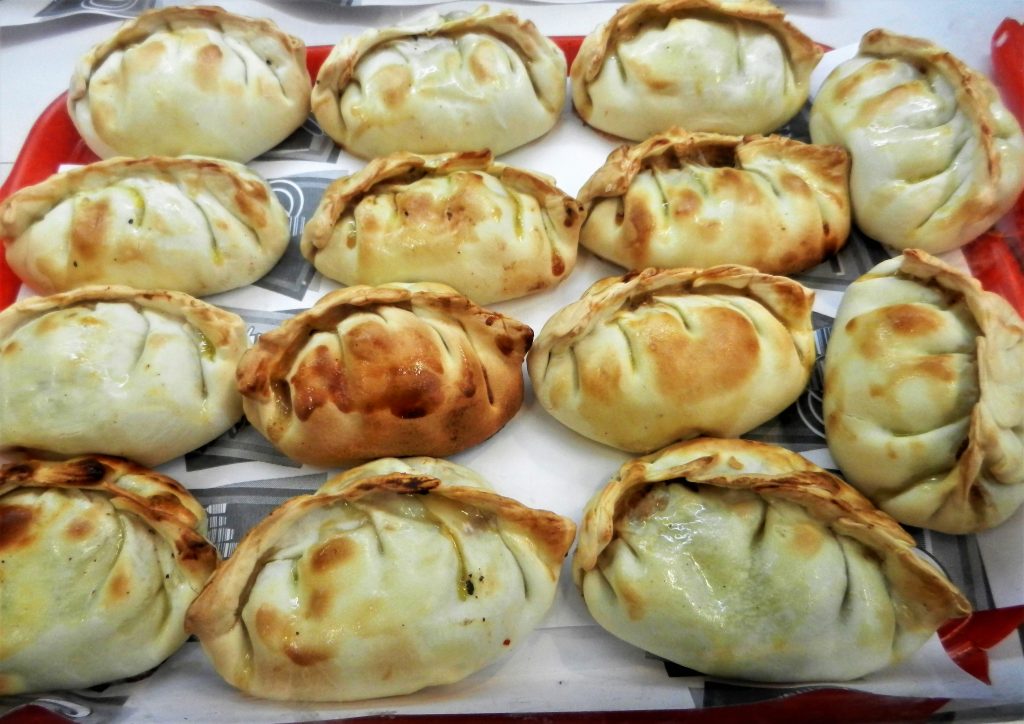
In La Boca, the PROA Foundation exhibits contemporary art. This historic neighborhood of Italian immigrants is very photogenic for its brightly colored houses painted with leftover paint from ships. There, in 1882, the Genoese tried to gain independence from Argentina. You will find the legendary Caminito and tango clubs as well as La Bombonera stadium, home of Boca Juniors.
For dining El Mirasol de la Recova, near the Four Seasons Hotel, is very convenient. They offer a good Malbec wine, empanadas, asado de lomo or milanesa with Spanish-style potatoes, and a fabulous dulce de leche and caramel pancake. Another option is La Stampa, with delicious pastas, also near the hotel.
FIFTH DAY
The unusual Ateneo Gran Splendid, the most beautiful bookstore in the world according to National Geographic, is in the building of the Gran Splendid Theater (1919). This unique bookstore features frescoes painted by Nazareno Orlandi, and caryatids by Troiano Troiani. It was renovated and converted into a bookstore in 2000.
One of the places you should not miss is the National Museum of Fine Arts (1896), which has 12,000 works of pre-Hispanic and colonial art, modern works by great Argentine, Uruguayan, and Latin American painters, and masterpieces by El Greco, Rembrandt, Goya, Sorolla, Van Gogh, Pollock, and Kandinsky.
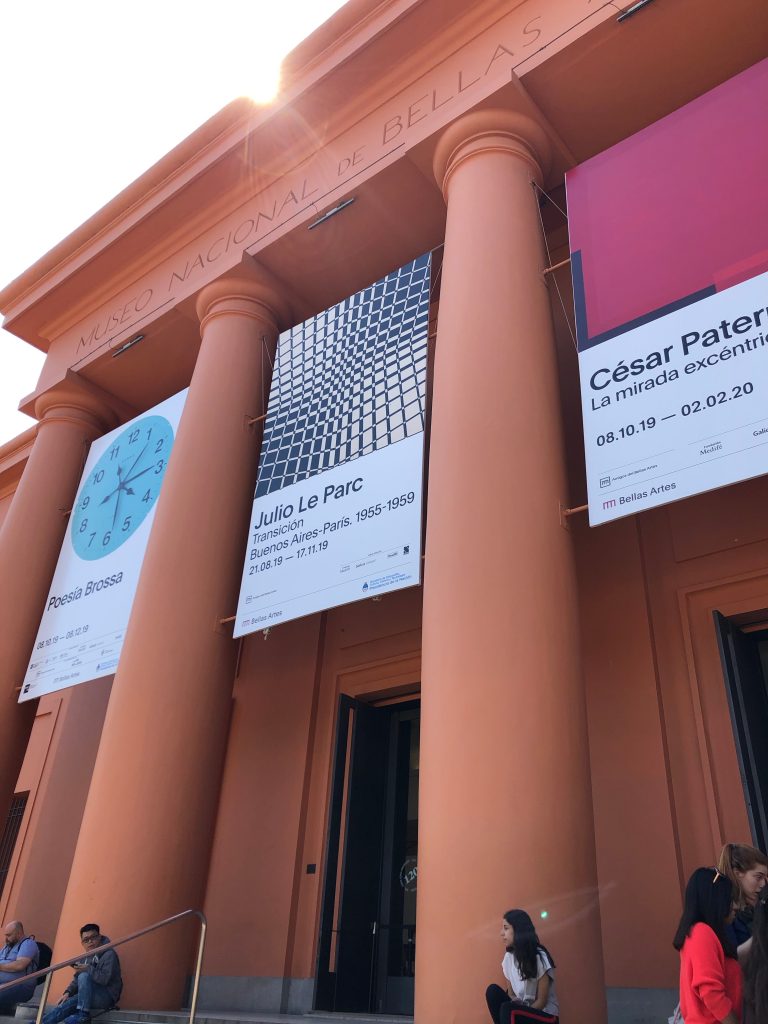
It is a pleasure to walk around Palermo SoHo, Palermo Viejo neighborhood, and walk along streets like Jorge Luis Borges, Gurruchaga or Malabia, visiting boutiques and cafes. Plaza Serrano has a great nightlife atmosphere due to its bars and Plaza Armenia has an artisan focus.
That last day you can say goodbye to Buenos Aires in Palermo Hollywood, which has this name because TV and radio producers opened their studios and offices there in the 1990s. The neighborhood has a great offer of international food and nightlife with its many bars and clubs. A great place to dine is El Club de la Milanesa, with enormous breaded steaks. Or if you prefer pizza try Kentucky.

Fabulous Argentinean ice cream places are: Helados Freddo and Helados Volta, or at any artisan-style ice cream stores. They descend from artisan Italian ice creams.
Buenos Aires is an exceptional tourism destination, a city that never sleeps, where life can be chaotic and overwhelming but also fascinating and exciting, for porteños (residents of the city) and visitors alike. Don’t listen to those who complain about this wonderful city and visit it as often as you can. You will not be disappointed.
Other famous restaurants (we have not tried these but they are recommended by Condé Nast and others):
Hotel Alvear: L’Orangerie and Alvear Grill
Restaurants near Recoleta Cemetery, Presidente Ortiz Street
Francisco Seubert’s Atelier Fuerza, F4 Esquina Steakhouse & Mercat Villa Crespo Martin Báez’s Villa Crespo’s Julia Restaurant
Villa Crespo: Don Julio
Nobiru Izakaya & Chinese restaurants in Belgrano’s Barrio Chino
Alegra Restaurante y Vinería, Olleros 389 Ajo Negro, Avenida Córdoba 6237
 Five Day Travel.Com
Five Day Travel.Com 